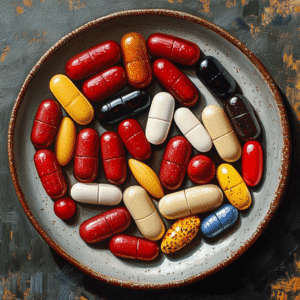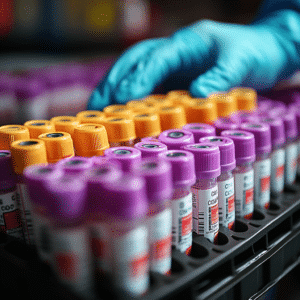Addiction is a complex and deeply personal struggle, yet the way it’s portrayed in the media can either foster understanding and compassion or reinforce negative stereotypes and stigma. In our interconnected world, the impact of media on addiction stigma cannot be overstated. This article delves into how different types of media—from news outlets to television shows and social media platforms—shape public perceptions of addiction and influence the stigma surrounding it.
The Role of News Outlets in Shaping Public Perception
In recent years, the media portrayal of addiction has significantly influenced public perception and stigma. News outlets like CNN, Fox News, and BBC often highlight dramatic and sensational stories, which can lead to a skewed understanding of addiction. These stories typically focus on criminal activities or extreme cases, painting addiction with a broad, often negative brushstroke. For instance, the heavy coverage of celebrity overdoses, such as that of Philip Seymour Hoffman, sometimes overshadows the broader, more complex realities of addiction and recovery.
Sensational Headlines and Their Disservice to Accurate Reporting
Headlines like “Hollywood Star Found Dead of Overdose” or “Addict Commits Crime Under Influence” create sensationalism but fail to address underlying issues such as mental health struggles, socio-economic factors, or the role of pharmaceutical companies. Such reporting fosters fear and misunderstanding, minimizing the societal capacity for empathy and support towards those struggling with addiction.
Alarmingly, 69.7% of articles contain stigmatizing content, while 53.1% directly impact the social lives of individuals with substance use disorder. Furthermore, 44.1% of articles reinforce dangerous perceptions associated with individuals with substance use disorders. These numbers underline the significant fault lines in how addiction is presented in the media.
Television Shows and Their Double-Edged Sword
Television has seen a surge in shows that address addiction, both fictional and factual. While series like “Euphoria” on HBO and documentaries like Netflix’s “The Pharmacist” bring attention to the opioid crisis, they can also perpetuate stereotypes.
Positive and Negative Portrayals: Euphoria vs. The Pharmacist
“Euphoria” offers a raw, unflinching look at teenage drug use and its consequences, yet at times, it has been criticized for glamorizing drug use. In contrast, “The Pharmacist” provides an in-depth look at the devastating effects of addiction on families and communities, as well as the relentless pursuit of justice by one father. Nonetheless, the critical reception of these shows highlights the delicate balance required in portraying addiction responsibly.
Incorporating societal and individual perspectives, these portrayals can either normalize the struggle and recovery or reinforce damaging stereotypes about those with addiction. This duality is worth noting, especially in a world colored by exaggerated, inaccurate, and often comical depictions of psychiatric disorders.
| Aspect | Details |
| Prevalence of Stigmatizing Content | – 69.7% of articles contain stigmatizing content. |
| Impact on Social Lives | – 53.1% of articles directly affect the social lives of individuals with substance use disorder. |
| Reinforcement of Dangerous Perceptions | – 44.1% of the articles reinforce dangerous perceptions associated with individuals with substance use disorder. |
| Causal Frames Emphasizing Individual Culpability | – Media often emphasize individual culpability in explaining addiction, contributing to widespread stigma. |
| Influence on Public Attitudes | – Media depictions likely contribute to widespread stigmatizing attitudes toward individuals with substance use disorders. |
| Portrayal of Psychiatric Disorders | – Media often use exaggerated, inaccurate, and comical images to portray individuals with psychiatric disorders, spreading incorrect information. |
| Terminology Used in Media | – Commonly used terms like “junkie” and “addict” dehumanize people and reflect misconceptions about addiction as a choice. |
| Associated Mental Health Struggles | – Many individuals with substance use disorder also struggle with depression, anxiety, eating disorders, and poor sleeping habits. |
| Impact of Social Media | – Negative portrayal and stigmatization on social media can lead to self-harm and even suicide among affected individuals. |
Social Media: Catalyst for Change or Perpetuator of Stigma?
Platforms like Facebook, Instagram, and TikTok have become double-edged swords in discussions about addiction stigma. On one hand, they offer invaluable support networks and platforms for advocacy. On the other hand, they can also spread misinformation and perpetuate harmful stereotypes.
Influencers and Advocacy: Real Stories of Recovery
Influencers and celebrities openly discussing their recovery journeys offer hope and break down stigma. Public figures like Demi Lovato use their platforms to talk candidly about their struggles and recoveries, providing followers with an honest portrayal of the challenges and triumphs associated with addiction. This openness can foster a more supportive and informed community.
The Dark Side: Online Shaming and Cyberbullying
Conversely, social media can amplify negative stereotypes and lead to cyberbullying of individuals in recovery. According to a 2023 survey by the Recovery Research Institute, 45% of people in recovery experienced online harassment related to their addiction, exacerbating feelings of shame and isolation. The underlying stigmatization of addiction in social media can sometimes lead to severe mental health issues like depression, anxiety, and even self-harm.
Advertising and Marketing: A Mixed Message
Brands and marketing campaigns also shape addiction stigma, aiming to spread awareness and educate but sometimes inadvertently perpetuating harmful stereotypes.
Effective Campaigns: Dove’s ‘Real Beauty’ and Public Health Campaigns
Dove’s “Real Beauty” campaign, although not directly about addiction, set a precedent for authentic and inclusive advertising. Public health campaigns, like those by the Truth Initiative, effectively use striking visuals and personal stories to highlight the dangers of nicotine addiction while promoting empathy and understanding.
Counterproductive Messaging: Some Alcohol Advertisements
On the other hand, advertisements for alcohol brands sometimes glorify excessive drinking, downplaying the potential for addiction and sending mixed messages. This can undermine public health efforts and reinforce harmful behaviors and misconceptions, contributing to the stigma and making recovery more difficult.
The Evolution of Addiction Stigma in Media Over Time
Reflecting on how media coverage of addiction has evolved provides perspective on the current state of stigma. Historically, coverage was often judgmental and punitive. However, there has been a gradual shift towards more empathetic and educational portrayals.
Early Media Portrayals: Vilification and Moral Judgment
In the 1980s and 1990s, media narratives around addiction often framed individuals as morally flawed or criminally deviant. This era saw the “War on Drugs” and related media panic, which heavily stigmatized people with substance use disorders. The media’s emphasis on individual culpability contributed significantly to widespread stigmatizing attitudes towards individuals with substance use disorders.
Modern-Day Media: A More Nuanced Approach
Today, there’s a growing recognition of addiction as a complex health issue. Documentaries, news features, and even daytime TV segments increasingly incorporate expert opinions, personal stories, and discussions on treatment options, reflecting a more humane and multifaceted understanding of addiction. This nuanced approach, slowly emerging in various forms of media, fosters a deeper understanding and empathy, helping to dismantle the stigma associated with addiction.
Moving Towards a More Compassionate Media Landscape
In light of the varied and powerful impact of media on addiction stigma, it becomes essential for parents and the community to recognize and advocate for accurate and compassionate portrayals of addiction. By promoting balanced narratives and sharing authentic stories, we can collectively shift public perception, diminish stigma, and create an environment where recovery is celebrated and supported.
For parents dealing with a child’s addiction or mourning the loss of a child due to addiction, the role of advocacy becomes even more poignant. Engaging in Anti-stigma Initiatives, Speaking out about addiction, and understanding The role Of advocacy in addiction not only empowers individuals but also fosters a supportive and informed community.
Media holds immense power in shaping perceptions. Therefore, advocating for responsible reporting, encouraging positive portrayals, and confronting harmful stereotypes head-on paves the way for a more compassionate and understanding society. Together, we can create a safer space for those impacted by addiction to share their stories, seek support, and ultimately, recover.
For more information and support, visit Mothers Against Addiction and join us in our mission to support parents and families affected by addiction.
The Impact of Media on Addiction Stigma
The impact of media on addiction stigma is profound and far-reaching. People tend to mirror behaviors and attitudes they see on screen, especially when it comes to sensitive issues like addiction. For instance, shows like The Voice recap often depict contestants’ emotional struggles, including battles with addiction, but they might inadvertently simplify or glamorize the problem. This simplification can make the true, harsh reality of addiction less visible, perpetuating misunderstanding and stigma.
Historical Depictions
In the early days, media painted addiction in a very negative light, and people struggling with it were often portrayed as villains or lost causes. This has had a long-lasting impact on society’s view of addiction. Even spaces like Hobby Lobby omaha featured products or campaigns that indirectly perpetuated negative stereotypes about addiction. The consistent portrayal of addiction as a criminal or moral failing solidified harmful stigma, affecting how addicts are treated in daily life and policy decisions.
Modern Media Influence
Today, media continues to shape perceptions, sometimes with little awareness of its impact. Platforms like As Is depict addiction with a mix of empathy and raw honesty, but this approach can sometimes be misconstrued as endorsement or normalization of substance use. A recent analysis indicated that while empathy-focused narratives have increased, the portrayal is still often biased or incomplete. This half-baked representation fails to convey the complex personal and societal challenges surrounding addiction.
The Cost of Misrepresentation
Poor media portrayals can also impact economic considerations. For people struggling with addiction, the process of recovery is lengthy and complex, akin to the Amortization of a mortgage, where progress is gradual and incremental. Sensationalized or misleading portrayals can discourage individuals from seeking help or from being taken seriously when they do so. Real-life steps to purchasing a house can offer a metaphor here; each step requires informed decisions and long-term commitment, much like the recovery journey which needs accurate representation and support at every stage.
All in all, the impact of media on addiction stigma is a double-edged sword – powerful but potentially very dangerous. Careful, factual, and compassionate storytelling is crucial to shift the narrative from stigma to understanding and support.
What is the stigma of addiction in the media?
Alarmingly, the media often portrays people with addiction in a negative light, using stigmatizing terms like “junkie” and “addict” that paint them as moral failures rather than individuals with a medical condition. This kind of language contributes to a societal view that people with addiction are to blame for their struggles, reinforcing harmful stereotypes and biases.
How does media contribute to stigma?
Media contributes to stigma by showing exaggerated and often inaccurate images of people with psychiatric disorders and addiction. These portrayals can make individuals appear comical, dangerous, or morally weak, spreading misinformation and reinforcing negative attitudes towards those with mental health and substance use disorders.
What is the stigma against addiction?
Stigma against addiction often revolves around the misconception that addiction is a choice rather than a compulsion. Terms like “junkie” or “addict” are frequently used, which dehumanize individuals and blame them for their condition, further alienating them from society and complicating their path to recovery.
What is the impact of social media addiction?
Social media addiction can lead to serious issues like depression, anxiety, and disrupted sleeping habits. Some people, feeling overwhelmed by the pressures and comparisons on social media, may resort to self-harm or even take their own lives, illustrating just how dangerous this addiction can be.
How social media features addiction?
Social media features addiction by continuously drawing users in with notifications, likes, and the never-ending scroll of new content. These platforms often use algorithms designed to capture and hold our attention, which can lead to compulsive use and dependency over time.
Why is media addiction bad?
Media addiction is harmful because it can lead to a lack of sleep, decreased productivity, and the worsening of mental health conditions like anxiety and depression. People who are addicted to media might find themselves isolated from real-world interactions and experiences, causing a negative impact on their overall well-being.
What is the biggest cause of stigma?
The biggest cause of stigma is often the way media presents addiction and mental health issues. When blame and negative stereotypes are emphasized, they shape public perception, leading to widespread stigmatizing attitudes that make it difficult for affected individuals to seek help and support.
What are 3 harmful effects of stigma?
Harmful effects of stigma include individuals feeling ashamed and isolated, both of which can deter them from seeking help. Stigmatized individuals might also face discrimination and reduced opportunities in areas like employment and housing.
How does social media reduce stigma?
Social media can reduce stigma by offering platforms for people to share their personal stories and experiences with addiction and mental health, fostering understanding and empathy. Positive and accurate representations can challenge prevailing stereotypes and encourage supportive communities.
What is the stigma associated with alcoholism?
Stigma associated with alcoholism often involves viewing individuals as morally weak or lacking self-control, rather than recognizing that alcoholism is a chronic disease requiring medical and psychological treatment.
How can people help to reduce stigma?
To reduce stigma, people can educate themselves and others about the realities of addiction and mental health, use respectful and non-judgmental language, and support those affected in their journey towards recovery.
What is an example of a stigma?
An example of a stigma is thinking that people with addiction are simply weak-willed or choosing to engage in substance use, ignoring the complex factors that contribute to substance use disorders.
What are the factors affecting social media addiction?
Factors affecting social media addiction include the need for social validation, fear of missing out (FOMO), and the instant gratification provided by likes and shares on posts. These factors can create a cycle of dependency that’s hard to break.
What does social media addiction look like?
Social media addiction looks like spending excessive amounts of time on social media platforms, often to the detriment of real-life interactions and responsibilities. Individuals may feel anxious or irritable when not online, and constantly check their devices for updates.
What are potential negative effects of social media phone addiction?
Potential negative effects of social media phone addiction include sleep disturbances, decreased productivity, and worsening mental health issues like anxiety and depression. It can also lead to social isolation as face-to-face interactions decline.
What is social media stigma?
Social media stigma involves the negative perceptions and judgments people might face based on what they post or how much time they spend online. This can extend to broader stigmatizing attitudes towards individuals who struggle with social media addiction.
What is an example of mental health stigma in the media?
An example of mental health stigma in the media is depicting people with psychiatric disorders as violent or unpredictable in movies or news reports, which can spread fear and misunderstanding among the general public.
Who suffers from social media addiction?
People from all walks of life can suffer from social media addiction, but it’s especially prevalent among teens and young adults, who are often more engaged with social media platforms and affected by the pressures they create.
What is social media addiction disorder called?
Social media addiction disorder is sometimes referred to as problematic social media use or internet addiction disorder. It involves behaviors and symptoms that closely mirror other forms of addiction, leading to significant distress and impairment in daily life.




























